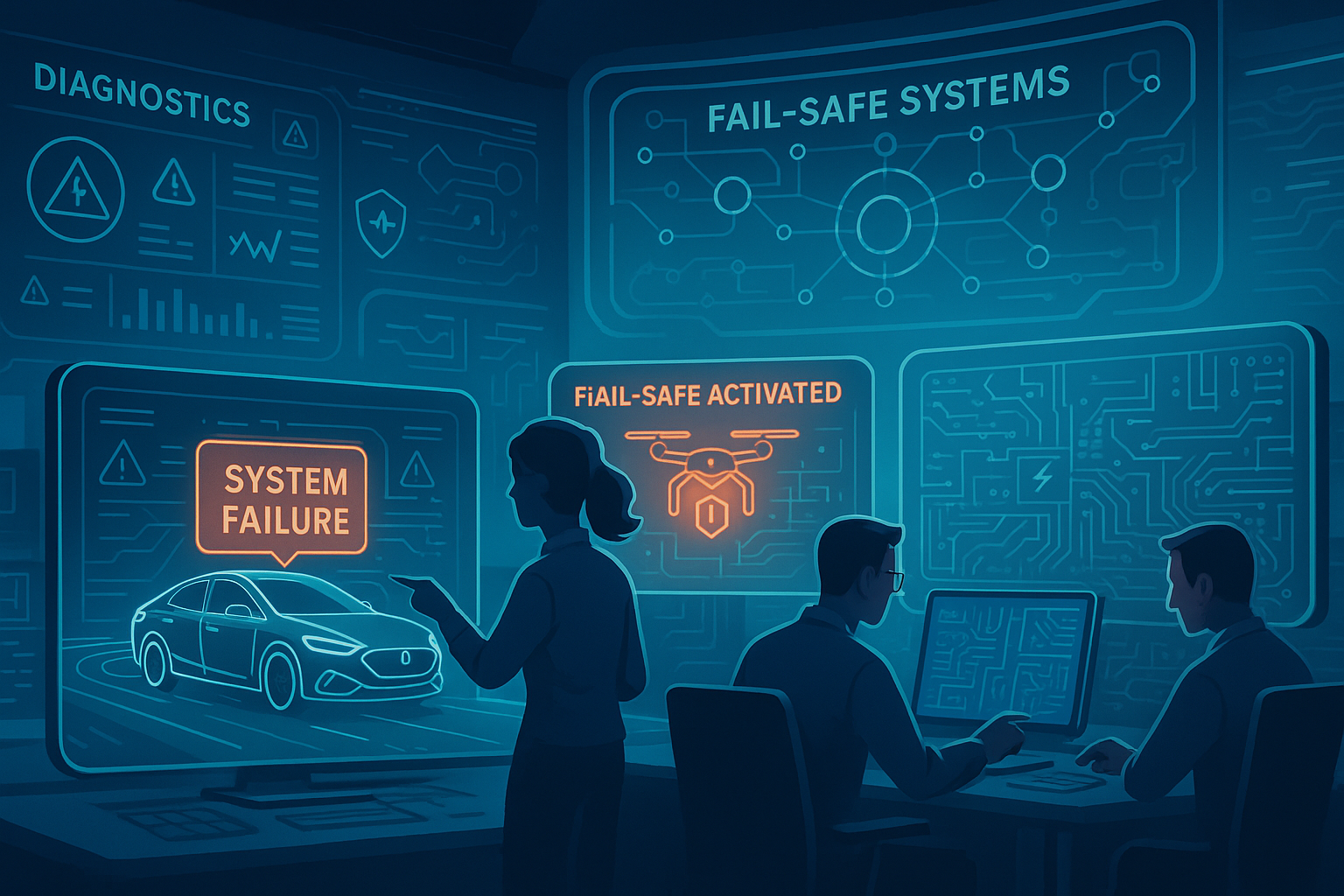As tech gets smarter and more self-reliant keeping it safe – when things go wrong – has become crucial. From cars that drive themselves to robots that work on their own, today’s systems need to be built to safeguard people and our surroundings even when they break down.
That’s why we have fail-safe systems – clever engineering fixes that help machines “mess up ” instead of “messing up .”
Let’s dig into what fail-safe systems are how they do their job, and why they’re so important in the world of self-operating machines.
🤔 What’s the Deal with “Fail-Safe”?
A fail-safe system has a design to handle failure without causing harm. Put when something goes wrong — like a sensor breaks or power cuts out — the system switches to a safe mode or shuts down in a controlled way.
Take these examples:
- A self-driving car that spots an error might pull over and stop instead of driving on.
- A drone might touch down when its battery gets low or it loses connection.
The key idea: Systems can fail — as long as they fail.
🧠 The Importance of Fail-Safe Design in Autonomous Systems
Autonomous systems make choices without ongoing human guidance. This gives them their power — and also creates risks. If they encounter issues and can’t recover, it might result in accidents, harm to people, or damage to the system.
This is why engineers apply fail-safe design to systems such as:
- 🚗 Self-driving vehicles
- 🦾 Industrial robots
- 🚁 Autonomous drones
- 🏥 Medical machines
Fail-safe features have the role of protecting both humans and the machines when unexpected events occur.
🛠️ Key Features of a Fail-Safe System
Here’s a look at some of the most crucial elements that make a system “fail-safe”:
1. Redundancy (Backup Parts)
Additional sensors or parts that kick in when the main ones stop working. For instance spare brakes in self-driving cars.
2. Self-Monitoring
The system keeps an eye on itself to detect early warning signs of problems.
3. Safe Shutdown
When something major goes wrong, the system shuts down instead of crashing or losing control.
4. Human Override
Some systems let a person take control in critical moments.
5. Alerts and Logging
The system reports issues and records data so developers can fix problems later.
🌍 Real-Life Examples of Fail-Safe Technology
Fail-safe systems have found their way into numerous modern applications:
- Tesla’s autopilot guides the car off highways or brings it to a stop when sensors malfunction.
- Surgical robots stop operations if they detect any irregularities.
- Warehouse robots stop moving when they sense obstacles or people in their vicinity.
These systems are built not to function, but also to maintain safety even when they encounter problems.
🔮 What’s Coming Up in Fail-Safe Engineering?
As AI and robotics make strides, their fail-safe features will follow suit. In the coming years, we might witness:
- AI that spots problems before they occur
- Systems that tackle minor issues by themselves (self-fixing)
- Smoother teamwork between people and machines
Safety won’t just be a fallback option — it’ll be woven into every aspect.
